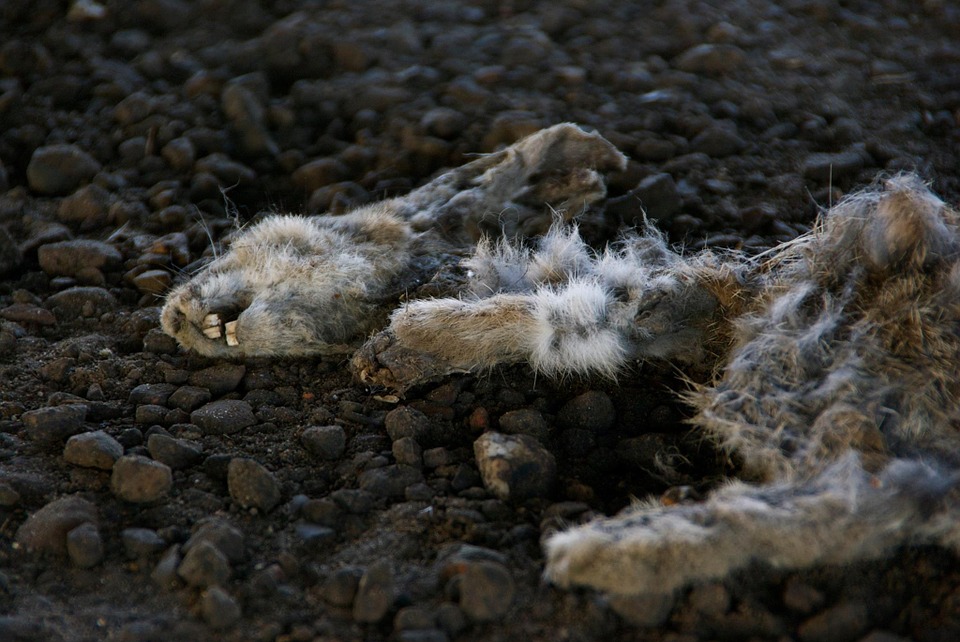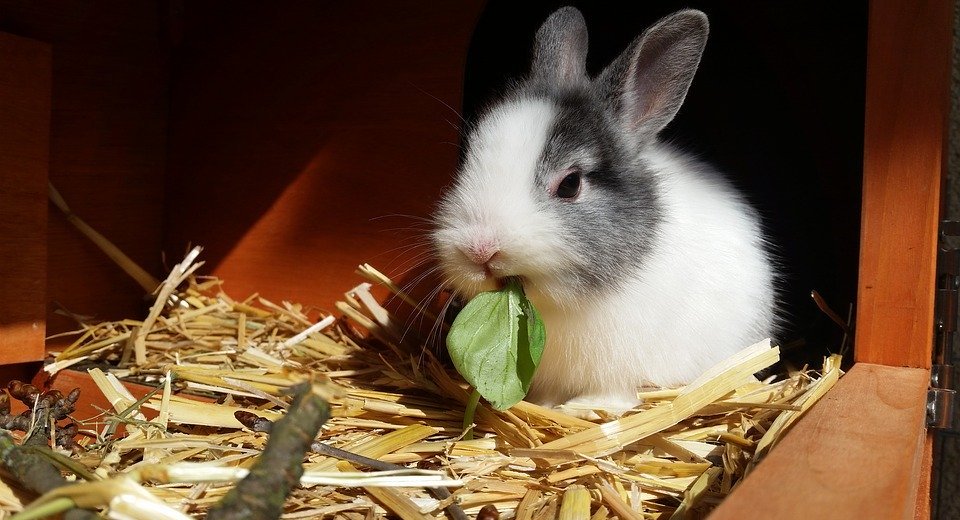This article dives deep into the intriguing question of whether rabbits can swim. While the common perception might suggest otherwise, the answer is not as straightforward as it seems. We'll explore the fascinating world of rabbit swimming, investigating their physical limitations, innate abilities, and the factors influencing their swimming prowess. We'll also discuss the risks associated with rabbits swimming and provide expert tips on how to ensure their safety if they ever find themselves in water. Join us as we unravel the mystery behind rabbit swimming!
Part 1: Dispelling the Myth

1.1. The Common Misconception
The common belief that rabbits are inherently afraid of water and will avoid it at all costs is deeply ingrained in our collective understanding of these fluffy creatures. This perception stems from their primarily terrestrial lifestyle. Rabbits are perfectly adapted to living on land, and their fur, for example, is not designed for prolonged immersion in water.
1.2. The Truth: Rabbits Can Swim!
While it's true that rabbits are not natural swimmers like ducks or otters, they are capable of swimming under certain circumstances. They are not instinctively afraid of water and can learn to swim with proper guidance and encouragement.
Part 2: The Physical Make-Up of a Rabbit

2.1. The Anatomy of a Non-Swimmer
Rabbits possess a body structure that is not ideally suited for swimming. Their dense fur, short legs, and lack of webbing between their toes make it challenging for them to propel themselves through water efficiently.
2.2. The Respiratory System: A Major Challenge
Rabbits are obligate nasal breathers, meaning they rely solely on their nose for breathing. Their respiratory system is not adapted to holding their breath for extended periods, making it difficult for them to stay submerged for long.
2.3. Fur: A Potential Downside
While it keeps them warm on land, a rabbit's fur becomes a liability in water. When wet, it weighs them down, making movement in water even more challenging.
Part 3: The Instinctive Swimming Response: A Fight for Survival
3.1. The "Dog Paddle" Technique
Despite their physical limitations, rabbits are surprisingly capable of utilizing a "dog paddle" swimming technique. They use their forelegs and hindlegs in a paddling motion, allowing them to stay afloat. This is a natural instinct for rabbits in water, a basic survival skill.
3.2. The Survival Instinct: A Powerful Force
The innate instinct to survive can drive rabbits to swim even when faced with potentially dangerous situations. If a rabbit finds itself in water, it may instinctively use its swimming abilities to reach safety.
3.3. Breed Variations: Do Some Rabbits Swim Better?
Some rabbit breeds, such as the Dutch rabbit, are known for being more water-tolerant than others. These breeds, with their shorter, stockier build, may be more inclined to engage in swimming activities. However, this is not a guarantee, and individual rabbits within any breed will have varying levels of comfort and skill in water.
Part 4: Training Your Rabbit to Swim: A Gentle Introduction
4.1. Gradual Introduction: The Key to Success
Introducing rabbits to water should be done gradually and with utmost care. Start by letting them dip their paws in shallow water and gradually increase the depth as they become more comfortable. Remember, the goal is to build trust and confidence in the water.
4.2. Positive Reinforcement: Treats, Praise, and Patience
Utilize positive reinforcement techniques, such as treats and praise, to encourage your rabbit to swim. This will help build their confidence and make the experience more enjoyable for them. Never force a rabbit into water; it will only create fear and anxiety.
4.3. Supervision: Never Leave a Rabbit Unattended in or Near Water
Never leave your rabbit unsupervised in or near water. Always ensure they have a safe exit point and provide them with a flotation device if necessary. A supervised, controlled environment will minimize risk and maximize enjoyment.
Part 5: The Risks of Rabbit Swimming
5.1. Water Depth: A Major Concern
Ensure that any body of water your rabbit has access to is shallow enough for them to easily stand or swim to safety. Avoid deep ponds, rivers, or pools. Even seemingly shallow water can hide hidden depths or sudden drop-offs.
5.2. Water Temperature: Keeping It Warm
Cold water can be dangerous for rabbits, as it can lead to hypothermia. Only allow your rabbit to swim in warm, shallow water. The ideal temperature is around 70-75°F (21-24°C).
5.3. Potential Predators: Always Be Aware
Keep an eye out for potential predators, such as dogs or cats, that may be attracted to the water and pose a threat to your rabbit. These predators might view a swimming rabbit as an easy target.
Part 6: Why Your Rabbit Might Seek Water
6.1. Curiosity: A Natural Drive
Rabbits can be curious creatures and may be drawn to water for exploration. It's important to supervise them and ensure they don't get into trouble. Curiosity can lead to unexpected situations, especially with water.
6.2. Escape from Danger: A Survival Strategy
If a rabbit feels threatened, it may instinctively jump into water to escape danger. This can be a survival instinct that helps them avoid predators. While this might save a rabbit from immediate danger, it does not always guarantee a successful escape.
6.3. Seeking Cool Relief: A Summertime Escape
On hot days, rabbits may be tempted to swim in water to cool down. However, it's crucial to ensure they are in a safe and supervised environment. Provide alternative cooling options, like a shaded area with cool water, rather than encouraging swimming.
Part 7: The Potential Benefits of Rabbit Swimming
7.1. Exercise: A Healthy Habit
Swimming can be a great form of exercise for rabbits, helping them stay fit and healthy. It engages their muscles and strengthens their cardiovascular system. This is especially beneficial for rabbits that are prone to obesity.
7.2. Mental Stimulation: A Stimulating Experience
Swimming provides rabbits with mental stimulation and keeps them engaged. It can help reduce boredom and encourage play. This can be a great way to combat the boredom that rabbits often experience, especially in indoor environments.
7.3. Bonding Experience: A Shared Activity
Swimming can be a fun and bonding experience for rabbits and their owners. It can foster a closer connection between the two. This shared activity can be a great way to build trust and companionship.
Part 8: FAQs
8.1. Can Rabbits Drown?
Yes, rabbits can drown if they are unable to reach the surface of the water and breathe. It's essential to supervise them at all times when they are near water. A rabbit's lack of ability to hold its breath for extended periods makes drowning a very real risk.
8.2. How Long Can a Rabbit Hold Its Breath?
Rabbits are not designed to hold their breath for extended periods. They rely on their nose for breathing and can only stay submerged for a short time before needing to surface for air. This makes it vital to ensure they have a safe way to get to the surface of the water.
8.3. Should I Teach My Rabbit to Swim?
While it's not essential to teach your rabbit to swim, it can be a fun and enriching experience if done safely and responsibly. Gradual introduction, positive reinforcement, and supervision are crucial. If you choose to teach your rabbit to swim, remember that it's a process of patience and understanding.
8.4. What If My Rabbit Falls into Water?
If your rabbit falls into water, try to scoop it out using a net or a towel. If you are unable to reach it, call for help and try to keep it calm until assistance arrives. Remain calm, assess the situation, and act quickly to ensure your rabbit's safety.
8.5. Is Swimming Safe for All Rabbits?
Swimming is not suitable for all rabbits. Older rabbits, rabbits with health conditions, or those with limited mobility may be at increased risk of complications. Consider your rabbit's individual needs and health before introducing them to water.
8.6. How Can I Keep My Rabbit Safe Around Water?
Ensure your rabbit has access to shallow, clean water only when supervised. Provide a safe exit point and consider using a flotation device if necessary. Take precautions to create a safe and controlled environment for your furry friend.
8.7. Can Rabbits Get Wet?
While rabbits should avoid prolonged immersion in water, a quick splash or a light drizzle won't harm them. However, it's important to ensure their fur dries quickly to prevent hypothermia.
8.8. What Should I Do If My Rabbit Gets Wet?
If your rabbit gets wet, gently towel-dry their fur as quickly as possible. Ensure their fur is completely dry before placing them back in their enclosure. Keep them warm and observe them closely for any signs of illness.
Everyone is watching
-

Do Rabbits Lay Eggs? (The Surprising Truth)
OTHER TYPES OF PETSThis article will unravel the common misconception that rabbits lay eggs, exploring the fascinating world of r...
-

Can Rabbits Eat Grapes? A Guide to Safe Rabbit Treats
OTHER TYPES OF PETSThis comprehensive guide will explore the safety and suitability of grapes for rabbits, providing detailed inf...
-

What's a Group of Rabbits Called? (A Comprehensive Guide)
OTHER TYPES OF PETSThis article delves into the fascinating world of rabbits, exploring the various terms used to describe a grou...
-

Predators That Hunt Rabbits: A Guide to Natural Enemies
OTHER TYPES OF PETSI've always been fascinated by the circle of life, that delicate dance between predator and prey. Growing up ...
-

Are Rabbits Nocturnal Animals?
OTHER TYPES OF PETSThe question of whether rabbits are nocturnal animals is a fascinating one, with a surprisingly complex answer...
